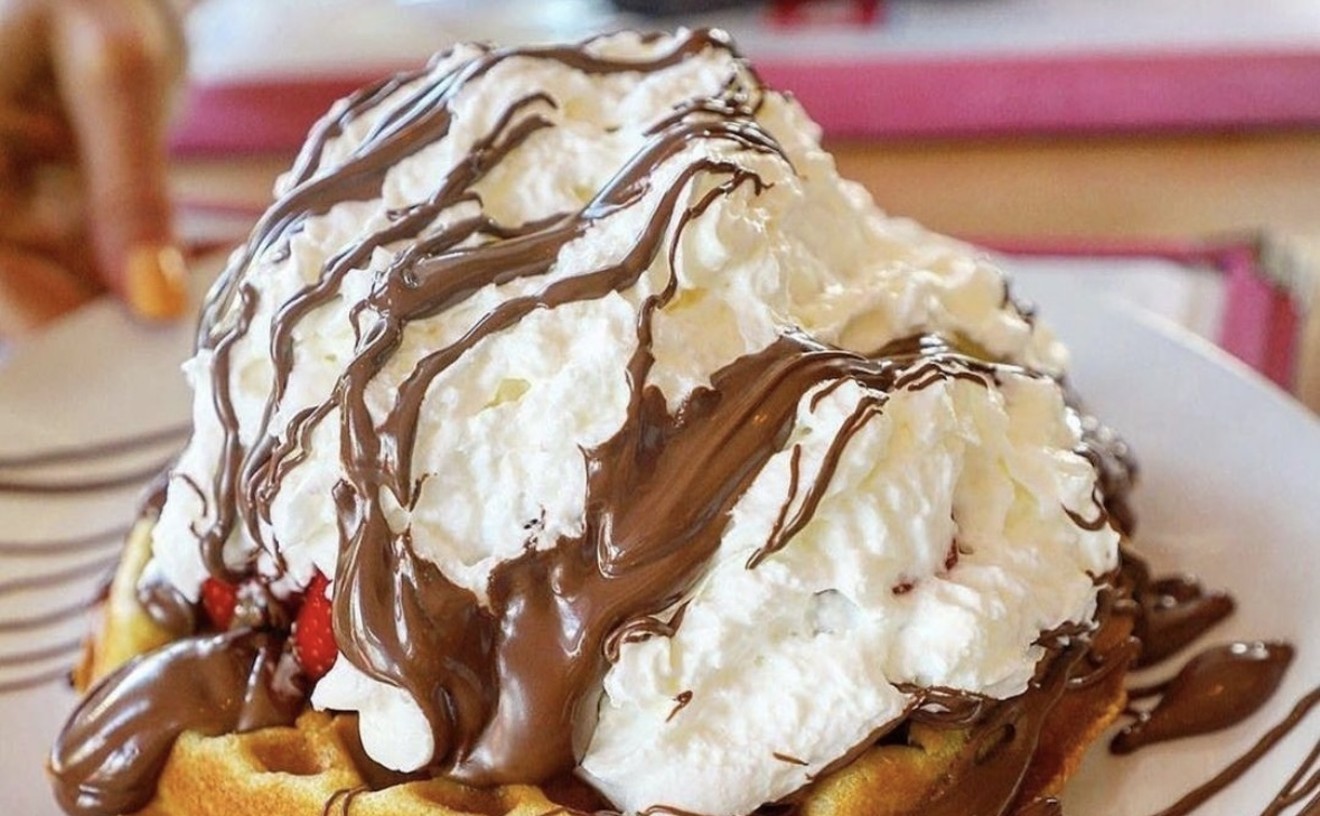Sometimes this tactic actually works. Phoenicia, a Lebanese restaurant on Coral Way and 28th Avenue last reviewed by New Times in 1990, intrigued me when it became Aladdin. Relishing the rare opportunity to dine in a new Middle Eastern eatery, I visited.
As it turned out, owner Marcel Manassa renamed his establishment two months ago, not because business was bad, but because the Latin community that comprises his neighborhood had trouble pronouncing Phoenicia. A 22-year veteran of the restaurant business (eleven in Miami, preceded by an equivalent stint in Caracas), Manassa chose Aladdin for its Arabian -- and Disney -- associations. As added insurance, he rewrote the menu and redecorated the 58-seat restaurant, laying down a new carpet and hanging (you guessed it) polished brass lamps on the walls.
For Lebanese magic, Aladdin -- the restaurant, not the movie -- certainly bears watching. A jovial Manassa pops out unexpectedly from his kitchen, like a genie from a lamp, bestowing smiles and witty conversation on his dinner guests. He stopped at our table to apologize for running out of the meatless stuffed grape leaves, one of the appetizers we had ordered, and suggested that we might enjoy the traditional version (with meat). We took his advice, and we weren't sorry. Though my recent experiences with grape leaves have been unpleasant (they can be tough and greasy, with a rancid flavor), Aladdin's were mild and tender, rolled around warm, finely ground beef and rice. Dipped in laban (plain homemade yogurt), this hors d'oeuvre was an auspicious beginning.
The fact that Aladdin's list of mezze (appetizers) was nearly as extensive as the assortment of entrees made for difficult decisions. We settled on the familiar baba ghannouj, a puree of broiled eggplant, sesame oil, garlic, and lemon. Though the delicious, smoky spread was too freely dressed with olive oil, the pita bread served alongside helped counteract that. Bright purple turnips decorated the dip, adding a touch of neon to the plate.
Ful medames, an unattractive but nearly addictive combination of rich, brown fava beans, ground chickpeas, garlic, and lemon was also too slick, but the mixture had a wonderfully dark and fruity undertone. Plump fava beans had a creamy texture, which contrasted nicely with the coarser chickpeas; the lemon's citrus scent and taste lent a refreshing, graceful top note.
Overdoing the legume family is a given when dining on Lebanese fare. Still, the lentil soup, a thick broth, chunky with chewy lentils, potatoes, celery, and minced onions, was perfectly salted and seasoned. Served as a side dish with some of the entrees, the soup is worth an a la carte investigation in its own right.
Like the appetizers, entrees were all good-size portions. We sampled the combination special, comprising one chicken, one kafta (beef), and one shish (lamb) kebab. Out of the three, the chicken was perhaps the most succulent, boneless chunks marinated in spices, skewered, and charcoal-broiled to a juicy consistency. Lamb was a flavorful close second, the tender meat exhibiting just the right amount of resistance. Only the beef, ground with onions and reshaped into a log before broiling, was dry. Tasty grilled onions topped all the kebabs; a scoop of bland Lebanese rice pilaf and the lentil soup were the other accompaniments.
Couscous was another likable combination, the steamed wheat almost hidden by the generous chunks of beef (without bones) and chicken (with bones), chopped onions, and chickpeas, garnished incongruously with slices of hamburger-style pickle chips. A savory brown gravy drenched the whole dish, which my companions and I agreed was similar in taste to our mothers' briskets.
Sheikh el mehchi was perhaps the most deft preparation. Four two-inch-thick large rounds of purple-skinned eggplant were stuffed with a combination of ground beef, pine nuts, minced onions, and a handful of spices including cinnamon and cumin. The vegetable was baked to melting readiness, then served with a light blanket of tomato sauce on top and plain Lebanese rice on the side.
Dessert is presented in the manner of a British tea: A three-tiered pastry tray is set in the middle of the table and you help yourself. Baklava and asabieh (small tubes), both made with phyllo dough, pistachio and cashew nuts, and a syrup derived from sugar, lemon juice, and orange-blossom water (as opposed to the Greek version, which utilizes walnuts and honey), provided a crunchy, buttery finish to a fine meal. There might not be any supernatural magic in this Aladdin, but if you visit in search of hearty Lebanese food, your wish almost certainly will be granted.










